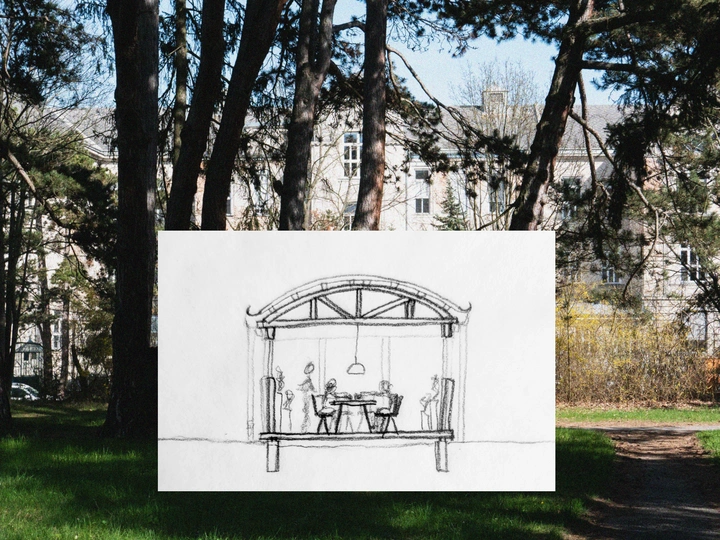Mourning Spaces as Emotional Infrastructure

I write, research, curate, speak, and educate in the expanded field of architecture. I am particularly interested in how people gather, share and connect, how bodies move, rest and recover. I develop places and spatial dramaturgies for these processes, be it in workshops, exhibitions, lectures, interviews, performances, or books. Based in Vienna, I work collectively and alone in mostly self-initiated projects.
Alongside my architecture studies at the Academy of Fine Arts Vienna, I experienced various ways of teaching. Workshops in spatial practice, dance, performance, and writing, and the spatial design programme at KADK Copenhagen led me to believe that education can and must become more inclusive and caring. Methods are our friends, the genius is dead.
I am the author of ‘Unter der Hohen Brücke’ (2021), digging in the ambiguous space within architecture and poetry. In 2022, I was a fellow at Impulstanz dance festival with my performative research ‘Landscape of Mourning’.
I am the initiator, main curator and facilitator of the collectively developed exhibition zkmb: ‘Back and Forth Cost Estimates, Breastfeeding and Turnaround Strategies’ (Architekturzentrum Wien 2023, travelling Austria). Gathering the positions of young architects in Austria through interviews and workshops, zkmb advocates for fair architecture work.
Currently, I research and edit a publication on Carina, a therapeutic centre for addiction in Feldkirch. Since 1997, patients have transformed the building, supervised by the therapeutic director, and following the plans by the architect and craftspeople.
Building on these experiences, I develop ‘Mourning Spaces’ through narrative design methods, awarded with a Margarete-Schütte-Lihotzky grant for architecture research in 2024. I teach both my research and methods at New Design University St. Pölten. I share my knowledge in public discussions, and articles; and by writing the essayistic book ‘Mourning Spaces’, I continue to imagine.
All people experience loss and grief, sooner or later, and in different forms, and yet there are hardly any built spaces for this deeply human experience. Having experienced grief and the lack of space for it myself, I began to develop this idea: Mourning Spaces as an emotional infrastructure that expands and condenses the existing social, caring infrastructure of a city. A spatial response to an unmet basic necessity.
For me grief came after the deaths of loved ones, and with losses less recognized: loss of security and trust coming with a chronic illness or sexual assault, or witnessing historic and present fascist violence, and destruction of ecosystems. My body went through repeated states of shock, pain and exhaustion, through sadness, anxiety and rage. My body needed space to express these emotions.
Inspired by everyday places, such as kitchen tables, showers or dance studios, I compile a ‘wishlist’ of spaces, where grieving people can share their pain, feel heard and seen, experience connection, and hope, again.
I use writing as a generative tool to design these multi-layered places, rather than only describing or contextualising them. In essayistic writing and sketching, I combine personal experience and memories with extensive research and analysis. The project is grounded in both the societal scale of feminist infrastructural critique (Krasny) and transformative grief (Cyril), and the body scale of affordances (Gibson) and the dual process model of grief (Stroebe/Schut). The network of Maggie’s cancer care centres became the key built reference.
The aim is to establish emotional infrastructures, eventually. Currently, I’m writing a book, reading from drafts, and sharing my research and writing methods in seminars, so as to inspire and give impulses to colleagues, students, and readers to imagine mourning spaces beyond cemeteries or monuments. Towards a network of collective, hopeful spaces that afford to meet the basic need for grief.